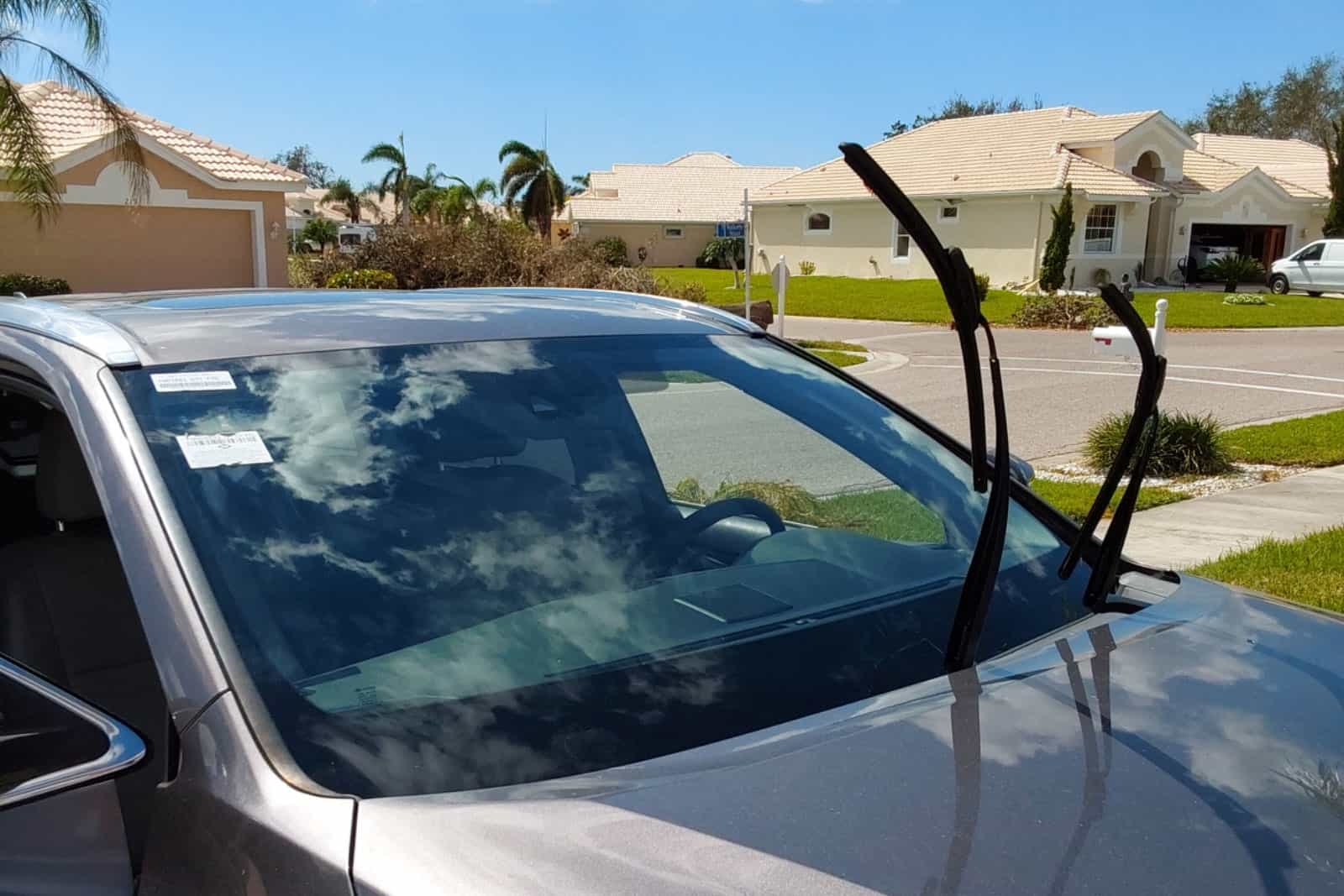

Finance
How Many Tires Do Insurance Cover
Published: November 13, 2023
Discover how insurance policies can protect your finances by covering the cost of replacing tires. Learn more about what is typically covered and how to maximize your insurance benefits.
(Many of the links in this article redirect to a specific reviewed product. Your purchase of these products through affiliate links helps to generate commission for LiveWell, at no extra cost. Learn more)
Table of Contents
Introduction
When it comes to auto insurance, many people are familiar with the coverage it provides for accidents, theft, and damage to their vehicles. However, one aspect that often goes unnoticed is tire coverage. Yes, that’s right – insurance policies can include coverage for your tires too. But how many tires do insurance policies actually cover? In this article, we will explore the topic of tire coverage in insurance policies and shed light on the key details you need to know.
Car tires are essential for a smooth and safe driving experience, but they can also be subject to damage from punctures, blowouts, vandalism, or other unforeseen incidents. This is where tire coverage in insurance policies comes into play, offering financial protection against these unexpected events.
Understanding the scope and limitations of tire coverage is crucial for every car owner, as it can potentially save them from hefty expenses down the road. So, let’s delve into the details of tire coverage, including the types of tires covered, coverage limits, deductibles, factors affecting coverage, and additional considerations you should be aware of.
Understanding Tire Coverage in Insurance Policies
When it comes to tire coverage in insurance policies, it’s important to know that not all policies include this type of coverage. Tire coverage is typically offered as an add-on or optional feature that policyholders can choose to include in their insurance plan.
The purpose of tire coverage is to protect against unexpected damage or replacement costs for tires that occur due to covered incidents. This can include things such as road hazards, vandalism, theft, or even normal wear and tear, depending on the specifics of the policy.
It’s vital to carefully review your insurance policy to determine if tire coverage is included or if it needs to be added separately. Some insurance companies provide tire coverage as a stand-alone policy, while others may include it as part of a comprehensive package.
It’s worth noting that tire coverage typically does not cover routine maintenance expenses like tire rotations, alignments, or replacing tires worn due to normal use. Instead, it focuses on unexpected and accidental damage to the tires.
Furthermore, the specifics of the coverage can vary from policy to policy. Some policies may only offer coverage for a certain number of tires, while others may cover all four tires. The coverage may also extend to other types of vehicles such as motorcycles or trailers.
It’s essential to review the details of your insurance policy and consult with your insurance agent to understand the specifics of tire coverage. They can provide clarity on the coverage limits, deductibles, and any additional terms and conditions associated with the policy.
Types of Tires Covered by Insurance
Insurance policies that provide tire coverage typically cover a wide range of tires. While the exact coverage may vary depending on your policy, it’s important to have a general understanding of the types of tires that are commonly covered.
1. All-Season Tires: All-season tires are designed to provide good performance in various weather conditions, including dry, wet, and light snow. These tires are commonly covered by insurance policies as they are the standard choice for many vehicles.
2. Winter Tires: Winter tires, also known as snow tires, are specifically designed for driving in snowy and icy conditions. Insurance policies may include coverage for winter tires, especially in areas where snowy weather is common or mandatory during certain months.
3. Summer Tires: Summer tires are optimized for warm weather conditions and provide excellent traction on dry and wet roads. These tires may also be covered by insurance policies, as they are widely used during the summer season.
4. Performance Tires: Performance tires are designed for high-performance vehicles and offer enhanced grip, handling, and cornering capabilities. These tires may be covered by insurance policies, particularly for policyholders who have high-performance vehicles.
5. Off-Road Tires: Off-road tires are built to withstand rough terrains, such as gravel, mud, and rocks. If you own a vehicle that is frequently used for off-road activities, your insurance policy may provide coverage for off-road tires.
It’s important to note that not all insurance policies cover tires for specialty vehicles or custom-made tires. If you have unique tires on your vehicle, it’s recommended to check with your insurance provider to determine if they are eligible for coverage.
Remember, the types of tires covered can vary depending on your specific policy. Always consult your insurance agent or refer to your policy documents to ensure you have a clear understanding of which types of tires are covered under your insurance coverage.
Coverage Limits for Tire Replacement
Insurance policies that include tire coverage will typically have specific coverage limits for tire replacement. These limits refer to the maximum amount that the insurance company will pay towards the replacement or repair of covered tires.
The coverage limits can vary depending on your insurance policy and the specific terms and conditions outlined within it. Some policies may have a set dollar amount as the coverage limit, while others may have a maximum number of tires that are covered.
For example, a policy may state that it will cover up to $200 per tire for replacement or repair costs. This means that if the cost of replacing a tire exceeds $200, the policyholder would be responsible for covering the remaining balance.
Alternatively, a policy may specify that it covers up to four tires, meaning that if only one tire needs to be replaced, the coverage will extend to all four tires. This can be particularly beneficial for policyholders who prefer to replace all four tires at once for better performance and safety.
It’s crucial to carefully review your policy documents and consult with your insurance agent to understand the specific coverage limits for tire replacement. Being aware of these limits will help you make informed decisions when it comes to filing a claim for tire-related expenses.
Furthermore, keep in mind that coverage limits for tire replacement may also be subject to deductibles, which are the out-of-pocket expenses that the policyholder must pay before the insurance coverage kicks in.
Understanding the coverage limits for tire replacement will allow you to plan accordingly and make sure you have the necessary coverage to handle unexpected tire expenses. Be sure to review your policy and ask any questions you may have to your insurance provider to ensure you have a clear understanding of the coverage limits for tire replacement.
Deductibles and Tire Coverage
When it comes to tire coverage in insurance policies, it’s important to understand how deductibles work. A deductible is the amount that you, as the policyholder, are responsible for paying out of pocket before your insurance coverage kicks in.
For example, if you need to replace a tire and the cost is $500, and your policy has a deductible of $100, you would be responsible for paying the first $100, and your insurance coverage would then pay the remaining $400.
When it comes to tire coverage, some insurance policies may have separate deductibles for tire-related claims, while others may have a single deductible that applies to all covered claims, including tire replacements.
It’s important to review your insurance policy and understand the deductibles associated with tire coverage. This will give you a clear understanding of the amount you will need to pay out of pocket before the insurance coverage takes effect.
It’s worth noting that the deductible amount can vary depending on your policy and the coverage you have chosen. Higher deductibles may result in lower premium costs, while lower deductibles may result in higher premiums.
When considering tire coverage, take into account the deductible amount and your financial ability to cover it comfortably. If the deductible is too high, it may not be financially beneficial to file a claim for tire-related expenses.
Remember to consult with your insurance agent or provider to fully understand the deductibles associated with the tire coverage in your policy. They will be able to provide you with specific information about how deductibles apply to tire-related claims and help you make informed decisions.
Understanding deductibles and how they impact tire coverage will allow you to assess the financial implications of filing a claim and make decisions that align with your specific needs and circumstances.
Factors Affecting Tire Insurance Coverage
When it comes to tire insurance coverage, there are several factors that can influence the terms and conditions of your policy. It’s important to be aware of these factors to understand how they may affect your coverage.
1. Type of Policy: The type of insurance policy you have can impact the coverage for tires. Different policies, such as comprehensive or collision coverage, may offer varying degrees of tire protection. It’s important to review your policy to ascertain the extent of your coverage.
2. Coverage Limits: Insurance policies often have coverage limits for tire replacement or repairs. These limits can vary depending on the policy and the terms and conditions set by the insurance company. Make sure to review your policy documentation to understand the specific coverage limits for your tires.
3. Vehicle Type: The type of vehicle you own can also impact your tire insurance coverage. Some insurance policies may have specific provisions for different types of vehicles, such as cars, motorcycles, or trailers. It’s essential to understand if your coverage extends to all the vehicles you own.
4. Geography: The geographic location where you drive your vehicle can also affect your tire insurance coverage. Certain regions may have specific risks, such as hazardous road conditions or a higher incidence of theft or vandalism. Insurance companies may adjust coverage options and rates accordingly.
5. Driving Habits: Your driving habits can also influence your tire insurance coverage. If you frequently drive in areas with rough terrains or engage in off-road activities, you may need specialized coverage for off-road tires. Similarly, if you have a high-performance vehicle, you may require coverage for performance tires.
6. Policy Exclusions: Insurance policies may have certain exclusions that limit coverage for tires. For example, coverage may not apply to tires that have exceeded their recommended lifespan or tires that were damaged due to neglect or intentional acts. Review your policy documents to understand any exclusions that may apply.
It’s important to thoroughly review your insurance policy and consult with your insurance agent to understand how these factors may affect your tire coverage. They can provide guidance on the specific terms and conditions of your policy and help you make informed decisions regarding your insurance coverage.
Additional Considerations for Tire Coverage
When it comes to tire coverage in insurance policies, there are a few additional considerations that you should keep in mind to ensure you have comprehensive and effective coverage.
1. Read the Fine Print: Insurance policies can be complex, and the terms and conditions regarding tire coverage may have specific details or limitations. Take the time to carefully read and understand the fine print of your policy to know exactly what is covered and under what circumstances.
2. Maintenance and Care: Regular maintenance and proper care of your tires are essential for their longevity and performance. Insurance policies typically don’t cover tire damage resulting from neglect or failure to maintain proper inflation levels and tread depths. Make sure to follow recommended tire maintenance practices to help prevent unnecessary tire expenses.
3. Replacement vs. Pro-Rating: Insurance policies may have different approaches to tire replacement. Some policies may cover the full cost of tire replacement, while others may pro-rate the coverage based on the remaining tire tread depth. Understand how your policy handles tire replacement to know what to expect in case of damage.
4. Roadside Assistance: Some insurance policies may offer roadside assistance coverage, which can include benefits like flat tire repair or towing in case of tire-related issues. Consider whether adding roadside assistance to your policy is beneficial, as it can provide additional peace of mind and convenience.
5. Claim Process: Familiarize yourself with the claims process for tire-related incidents. Know the necessary steps to initiate a claim, the information required, and any specific documentation needed, such as estimates for tire replacement or repair. Understanding the claim process can help expedite the resolution of tire-related issues.
6. Communicate with Your Insurance Agent: If you have any questions or concerns about your tire coverage or need to make changes to your policy, reach out to your insurance agent. They are there to assist you, provide clarification, and help ensure that you have the right coverage for your tire-related needs.
Remember that each insurance policy is unique, and the additional considerations for tire coverage may vary. By being proactive and knowledgeable about your policy, you can make informed decisions and ensure that your tires are adequately protected.
The Importance of Reading the Fine Print
When it comes to any insurance policy, including tire coverage, it’s crucial to read the fine print and thoroughly understand the terms and conditions. This may seem tedious, but it is essential to ensure that you have the coverage you need and that you fully understand what is covered and what is not.
The fine print contains the specific details of your tire coverage, including any limitations, exclusions, or requirements. By reading and understanding this information, you can avoid misunderstandings and unexpected surprises when it’s time to file a claim.
Here’s why reading the fine print of your insurance policy is so important:
1. Clear Understanding: The fine print provides clarity on the scope of your tire coverage. It outlines the specific incidents that are covered, the types of tires included, and any limits that may apply. Understanding these details ensures that you know exactly what to expect from your coverage.
2. Limitations and Exclusions: Insurance policies may have certain limitations or exclusions for tire coverage. For example, coverage may not apply if the tires were damaged intentionally or as a result of racing activities. Knowing these limitations allows you to make informed decisions and take steps to mitigate risks.
3. Compliance Requirements: Some policies may have specific requirements that must be met to maintain coverage. This could include regular tire maintenance, such as keeping proper inflation levels or replacing tires before they reach a certain tread depth. Understanding these requirements helps you stay in compliance with the policy terms.
4. Claim Process: The fine print outlines the procedure for filing a tire-related claim. It provides guidance on the necessary documents, the time window for filing claims, and any specific requirements for reporting incidents. Being familiar with the claim process helps you follow the correct steps and ensures a smoother experience if you need to file a claim in the future.
5. Knowledge is Power: Ultimately, reading the fine print puts you in a position of knowledge and empowerment. It enables you to make informed decisions, ask the right questions to your insurance provider, and take appropriate actions to protect your tires and maximize your coverage benefits.
Remember, insurance policies can be complex, and the fine print contains critical information that can significantly impact your coverage. Take the time to read and fully understand the terms and conditions of your policy to avoid any surprises or gaps in coverage.
Conclusion
Tire coverage in insurance policies can provide valuable protection against unexpected tire damage or replacement costs. Understanding the ins and outs of tire coverage is essential for every car owner, as it can save them from significant financial burdens in the event of tire-related incidents.
In this article, we have explored various aspects of tire coverage, including the types of tires covered, coverage limits, deductibles, factors affecting coverage, and additional considerations. By understanding these key factors, you can make informed decisions when it comes to selecting the right insurance policy for your tire protection needs.
Remember to carefully review your insurance policy, read the fine print, and consult with your insurance agent to ensure a clear understanding of your tire coverage. Be aware of any limitations, exclusions, or requirements associated with the policy to avoid any potential gaps in coverage.
Regular tire maintenance and care are also important in maximizing the lifespan of your tires and preventing unnecessary damage. Keep up with routine maintenance practices and be mindful of any requirements outlined in your insurance policy to maintain full coverage benefits.
In conclusion, tire coverage in insurance policies can provide valuable peace of mind and financial protection against unexpected tire-related expenses. By being proactive, knowledgeable, and thorough in your approach to tire coverage, you can enjoy a smoother driving experience knowing that your tires are adequately protected.














